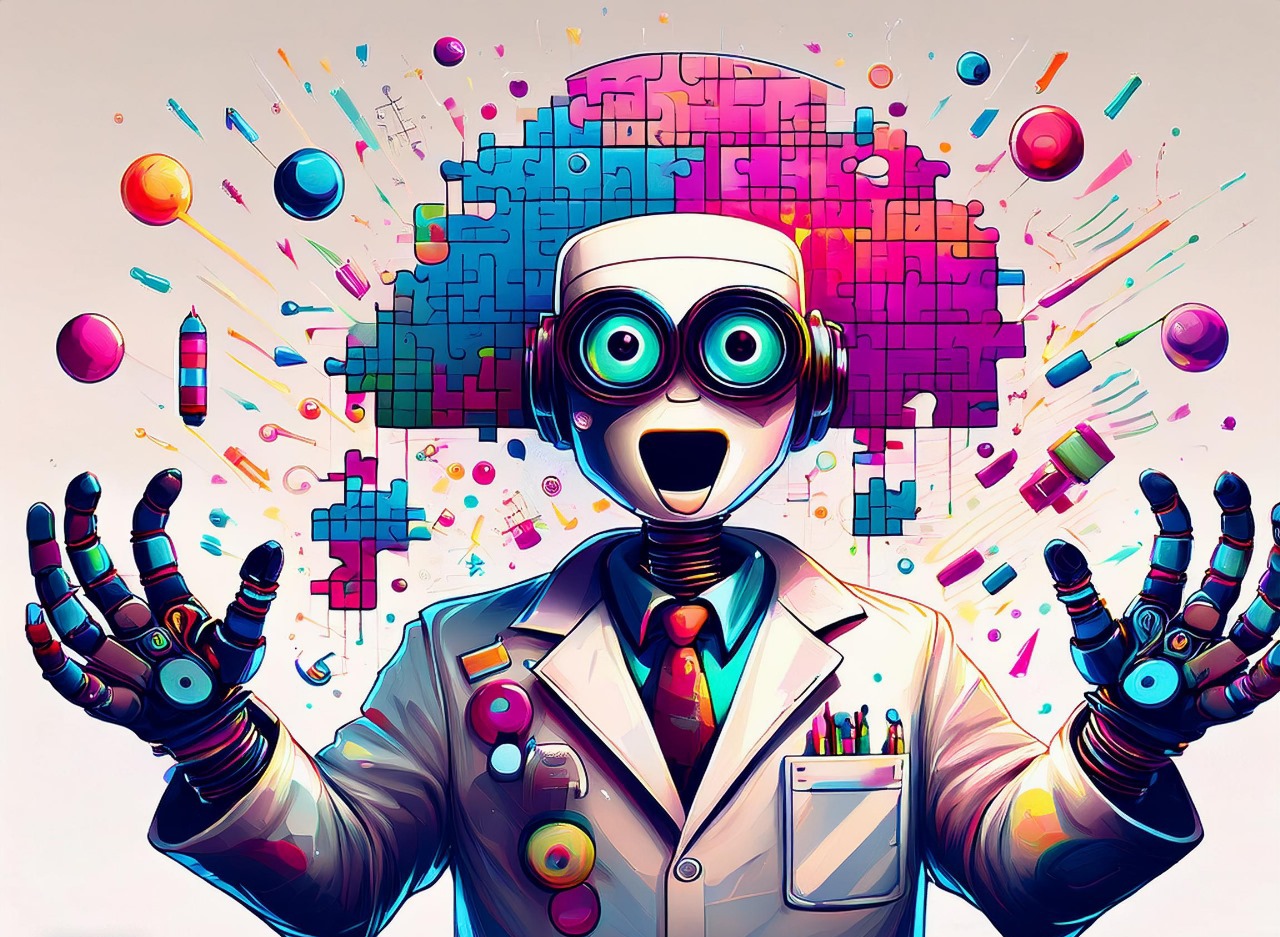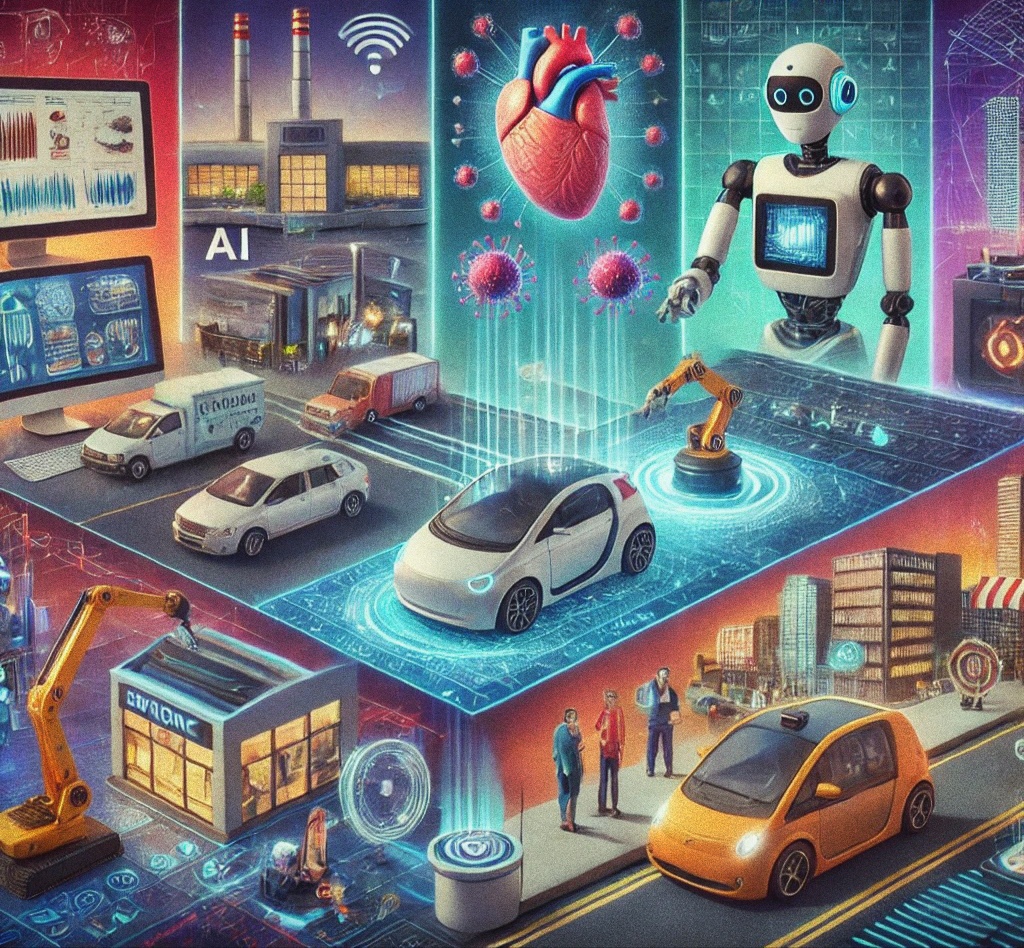Unpacking the Mechanics Machine Learning The Engine Behind Artificial Intelligence At the core of Artificial intelligence is an idea called Machine Learning (ML). Consider ML the brain of AI — a framework that gains and improves as a matter of fact, similar as how we people master new abilities. However, rather than going to classes or understanding books, ML frameworks advance overwhelmingly of information. Machine Learning works by using algorithms — bit by bit systems or recipes for tackling issues — that can recognize designs inside information. Envision you show a ML model a large number of pictures of dog. Over the long haul, the model figures out how to perceive the normal elements of a dog, like fur, bristles, and ears. After enough practice, it can recognize a dog in another photograph it has never seen. The Different Flavors of Machine Learning Supervised Learning: In this strategy, the framework is prepared on a named dataset, and that implies the information accompanies predefined replies. For instance, if you need to help a computer based intelligence to perceive spam messages, you’d give it a dataset of messages named as “spam” or “not spam.” The artificial intelligence then figures out how to recognize designs related with spam messages. Unsupervised Learning: Here, the computer based intelligence is given information without marks and should find patterns all alone. This is frequently used for clustering, where the system groups similar data points together, like organizing a playlist by music genre. Reinforcement Learning: This resembles preparing a dog with treats. The AI is given an undertaking and advances by experimentation, getting rewards (uplifting feedback) for fruitful activities. This strategy is in many cases utilized in game-playing AIs, similar to the ones that can beat human bosses at chess or Go. Machine Learning is the foundation of most AI applications today, driving everything from proposal engines to fraud identification frameworks. Deep Learning: AI’s Mental ability on Steroids: If Machine Learning is the brain of AI, then Deep Learning is its supercharged form— a technique that permits machines to deal with data in manners that are inspired by the human cerebrum. Deep Learning uses artificial neural networks, which are algorithms modeled after the way our cerebrums work. These neural networks comprise of layers of interconnected hubs, like neurons in the human cerebrum. Every hub processes data and gives it to the following layer, progressively refining its comprehension until it arrives at a result, such as identifying an item in a photograph or recognizing speech. Deep Learning powers probably the most progressive AI frameworks today, for example, self-driving vehicles, which need to investigate a ceaseless stream of information from cameras and sensors to securely explore streets. Additionally behind the innovation permits man-made intelligence to produce sensible pictures, interpret dialects with high exactness, and even make music. What makes Deep Learning so strong is its capacity to deal with complex errands that were recently remembered to be past the scope of machines. It’s the reason AI can now perform assignments like diagnosing ailments from X-rays or recognizing fraud with pinpoint precision. Natural Language Processing (NLP): The AI That Talks Back Natural Language Processing (NLP) is the part of AI that spotlights on empowering machines to comprehend, decipher, and answer human language such that feels regular. It permits your remote helper to comprehend when you request that it set an update or tell you a joke. NLP includes a few parts: Speech Recognition: This is the capacity to change over communicated in language into text. It powers voice-enacted frameworks like Siri or Google Partner. Sentiment Analysis; This method is utilized to decide the close to home tone behind a piece of text, for example, recognizing whether a client survey is positive or negative. Machine Translation: This is the method involved with translating text starting with one language then onto the next, similar to research Interpret. It includes understanding the unique situation and subtleties of the language, which can very challenge. Chatbots and Conversational Agents: These are frameworks intended to carry on a discussion with a human client. They are generally utilized in client care, where they can deal with questions and offer help every minute of every day. NLP is continually improving, making communications with AI more consistent and human-like. The objective is to make frameworks that comprehend the words you say as well as handle the importance and plan behind them.
The Effect of Artificial intelligence: How AI is Now Running Your Life (And You Didn’t Actually Notice)
Medical services Unrest: How AI is Saving Lives AI is upsetting medical care by empowering quicker, more precise judgments and customized therapy plans. One of the main progressions is in the field of clinical imaging. AI frameworks are being prepared to dissect MRIs, X-rays, and CT scan, recognizing conditions like cancer, coronary illness, and neurological issues with wonderful precision. For example, AI can recognize early indications of breast cancer in mammograms, frequently spotting growths that human radiologists could miss. This early identification can prompt more effective medicines and better persistent results. Artificial intelligence is likewise gaining ground in drug disclosure and advancement. Overwhelmingly of information from clinical preliminaries, Ai can recognize likely new medications and anticipate how they could interface with the human body. This rates up the exploration interaction and puts up new medicines for sale to the public quicker. In the realm of customized medication, artificial intelligence is assisting specialists with fitting therapies to individual patients in view of their genetic makeup, lifestyle, and clinical history. This approach is more powerful and lessens the gamble of incidental effects, offering a more exact and designated type of medical care. Finance Gets a Makeover: AI in Banking and Beyond The financial industry is quite possibly of the most data-driven areas, making it an ideal fit for Ai. Banks and financial institutions are utilizing AI to further develop client care, distinguish misrepresentation, and oversee risk. One of the most apparent utilizations of Artificial intelligence in finance is the utilization of chatbots and virtual assistants. These AI controlled apparatuses can deal with client requests, give monetary exhortation, and even assist clients with dealing with their records, all without the requirement for human intercession. Ai is likewise assuming a critical part in misrepresentation discovery. By examining exchange designs, AI systems can identify unusual behavior and flag potentially fraudulent activity. This helps protect consumers and businesses from financial losses. In investment management, AI algorithms are being utilized to dissect market information and make forecasts about stock costs, loan fees, and monetary patterns. These experiences assist financial backers with pursuing more educated choices and advance their portfolios. Additionally, AI is changing the manner in which monetary foundations approach risk the board. By breaking down authentic information and distinguishing designs, Artificial intelligence can anticipate possible dangers and help organizations plan for and alleviate them. Retail and Manufacturing: Artificial intelligence’s Effect on How We Shop and Work The retail and manufacturing industries are being changed by AI in manners that are both apparent and in the background. In retail, AI is improving the shopping experience through personalization. Online retailers like Amazon use AI to analyze client conduct and recommend items that are probably going to be of interest. This increments deals as well as makes the shopping experience more agreeable for clients. In actual stores, AI is being utilized to optimize inventory management. By breaking down deals information, AI can predict which products are likely to be in high demand and ensure that they are always in stock. This assists retailers with keeping away from stockouts and overload circumstances, further developing effectiveness and consumer satisfaction. AI is likewise influencing manufacturing by smoothing out production processes and working on quality control. AI controlled robots are taking on errands that are tedious, dengerous, or require high accuracy, permitting workers to focus on more complex and creative tasks. Predictive maintenance is another area where AI is having a critical effect. By breaking down information from sensors implanted in hardware, AI can predict when a machine is probably going to come up short and timetable support before it works out. This reduces downtime and expands the lifespan of equipment. Self-Driving Vehicles: The Future of Transportation is Here Self-driving vehicles are as of now not a far off dream — they are a reality, because of AI. These vehicles utilize a blend of sensors, cameras, and AI algorithms to explore streets, stay away from obstacles, and make decisions in real time. The innovation behind self-driving vehicles includes a few AI parts, including Computer Vision, which permits the vehicle to “see” its environmental factors, and Machine Learning, which assists it with gaining as a matter of fact and work on its driving capacities over the long run. One of the key advantages of self-driving vehicles is their capability to reduce accidents caused by human blunder, which is liable for most of car crashes today. AI driven vehicles are intended to adhere to traffic guidelines, keep safe distances, and respond rapidly to unexpected circumstances. As well as further developing street security, self-driving vehicles can possibly change the manner in which we ponder transportation. Imagine a future where you can call a vehicle with your cell phone, and it shows up close to home, prepared to take you any place you want to go — no driver’s permit required. As self-driving innovation keeps on propelling, we can hope to see more independent vehicles out and about, prompting a future where transportation is more secure, more productive, and more open.





